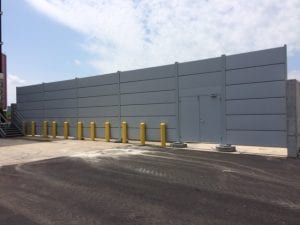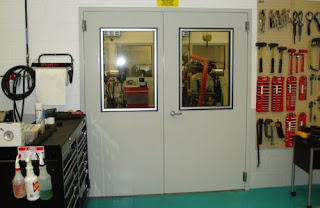Things you should know about a flexible noise barrier
A flexible noise barrier is actually loaded vinyl barrier that blend flexibility, mass and limpness to block noise from transmitting from one area to another. They are available non-reinforced, clear and reinforced in an assortment of styles and weights to meet various applications.
Noise barriers like industrial baffles block undesired sound rather than damping or absorbing them. A type of acoustic insulation, these baffles are made of thick materials and used at the sound source and along its path. By realizing how sound barriers work, the way they are manufactured, and the various types that are available, you can select the ideal solution for your application.
How a flexible noise barrier works
Noise barriers like baffles prevent sound waves from passing through the floors, walls, ceilings and other structures. They are generally made of vinyl, a thick but flexible material that offers durability, strength and resistance to moisture and humidity.
Mass loaded Vinyl and vinyl can be laminated to facings and foams that offer vibration control, sound absorption and industrial noise control properties. Melamine, an acoustical foam type, is frequently used as it is flexible but semi-rigid. Melamine foams are also lightweight and flame-resistant.
Depending on the materials used, a flexible noise barrier can meet Class A requirements for construction or building for flame resistance. In HVAC systems, flexible vinyl sheets that are bonded to aluminized reinforced plastic film are used as duct wrap or pipe wrap.
Noise barriers and a Hemi- anechoic chamber are used in different kinds of environments. Acoustic insulation for railcars and buses should meet particular smoke, flame and toxicity standards. Noise blockers in military land systems also promote occupant safety. When acoustic insulation is used as vehicle flooring, a wear resistance and a non-slip surface is needed.




Comments
Post a Comment